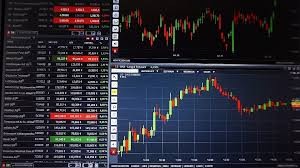
In the world of financial markets, Forex trading systems are crucial for traders seeking to optimize their strategies and maximize their profits. With the right tools and knowledge, individuals can navigate the complexities of currency trading. For those looking to enhance their trading experience, forex trading systems fxtrading-broker.com provides valuable resources and insights.
What Are Forex Trading Systems?
Forex trading systems are structured methodologies that traders use to evaluate potential currency trades. These systems encompass a wide range of tools and techniques, including technical analysis, fundamental analysis, and algorithmic trading. The primary goal of using a trading system is to make informed decisions based on historical data and market trends, thus improving the likelihood of profitable trades.
Types of Forex Trading Systems
There are various types of Forex trading systems that cater to different trading styles and preferences. Some of the most common types include:
1. Manual Trading Systems
Manual trading systems rely on the trader’s ability to analyze charts and market conditions. This approach involves making decisions based on intuition, experience, and technical indicators. Manual traders often develop their own strategies and adjust them based on changing market conditions.
2. Automated Trading Systems (EAs)
Automated trading systems, commonly known as Expert Advisors (EAs), utilize algorithms to execute trades without human intervention. These systems are programmed to follow specific rules and conditions, enabling traders to take advantage of opportunities around the clock. EAs can be particularly beneficial for traders who cannot monitor the markets continuously.
3. Algorithmic Trading Systems
Algorithmic trading refers to high-frequency trading strategies that rely on complex mathematical models and algorithms to execute trades. These systems analyze vast amounts of data and execute trades in milliseconds. They are typically used by institutional traders and require significant computational power and infrastructure.
4. Swing Trading Systems
Swing trading systems focus on taking advantage of short to medium-term price movements. Traders using these systems typically hold positions for several days to weeks, aiming to capture gains from price fluctuations. Swing trading systems often rely on both technical and fundamental analysis to identify entry and exit points.
Key Components of a Forex Trading System
Regardless of the type of trading system employed, several key components are essential for success:
1. Risk Management
Risk management is a critical aspect of any trading system. Effective risk management involves determining the appropriate position size, setting stop-loss orders, and diversifying investments to minimize potential losses. Successful traders often risk only a small percentage of their trading capital on each trade to protect their overall portfolio.
2. Trade Entry and Exit Signals
Trade entry and exit signals define when a trader should enter or exit a position. These signals can be generated from technical indicators, price patterns, or fundamental news events. Clear criteria for entering and exiting trades help traders maintain discipline and avoid emotional decision-making.
3. Timeframes
Forex trading systems can operate on various timeframes, including scalping (very short-term), day trading (short-term), and position trading (long-term). The choice of timeframe affects the trading strategy and the techniques used for analysis. Different strategies may be more effective on different timeframes, so it’s essential for traders to select one that aligns with their goals and schedule.
Building Your Own Forex Trading System
Creating a successful Forex trading system requires time, dedication, and a thorough understanding of the markets. Here’s a step-by-step guide to building your own trading system:

1. Define Your Goals
Start by setting clear trading goals. Are you looking for long-term wealth accumulation, or are you aiming for quick profits? Understanding your objectives will guide the development of your trading strategy.
2. Choose a Trading Style
Select a trading style that suits your personality and lifestyle. Consider factors such as the time you can dedicate to trading, your risk tolerance, and your previous trading experience.
3. Educate Yourself
Invest time in learning about technical analysis, chart patterns, and indicators. Familiarize yourself with different trading strategies and how to apply them effectively.
4. Develop a Trading Plan
Your trading plan should outline your entry and exit strategies, risk management techniques, and performance evaluation methods. Having a well-defined plan allows you to stay focused and disciplined during trading.
5. Backtest Your Strategy
Before implementing your trading system in the live market, backtest it using historical data. This process involves analyzing how your system would have performed in the past, which helps identify strengths and weaknesses.
6. Start Trading with a Demo Account
Before risking real capital, practice your trading system using a demo account. This allows you to gain practical experience and make adjustments without financial pressure.
Tips for Successful Forex Trading
Here are some additional tips to enhance your Forex trading experience:
1. Stay Informed
Keep up to date with economic news and events that may impact currency markets. Understanding the factors that influence price movements will help you make informed trading decisions.
2. Maintain a Trading Journal
Documenting your trades is essential for continuous improvement. A trading journal allows you to review your performance, identify mistakes, and refine your strategy over time.
3. Control Your Emotions
Emotional decision-making can lead to significant losses. Learn to manage your emotions, stick to your trading plan, and avoid making impulsive trades based on fear or greed.
4. Stay Flexible
The Forex market is dynamic and can change rapidly. Be prepared to adapt your trading strategy as market conditions evolve and new information becomes available.
Conclusion
Forex trading systems serve as valuable tools for traders looking to navigate the complexities of currency markets. By understanding the different types of trading systems, their key components, and how to build a successful strategy, traders can improve their chances of success. Remember, persistence, continuous education, and disciplined execution are vital to thriving in the Forex trading environment.
